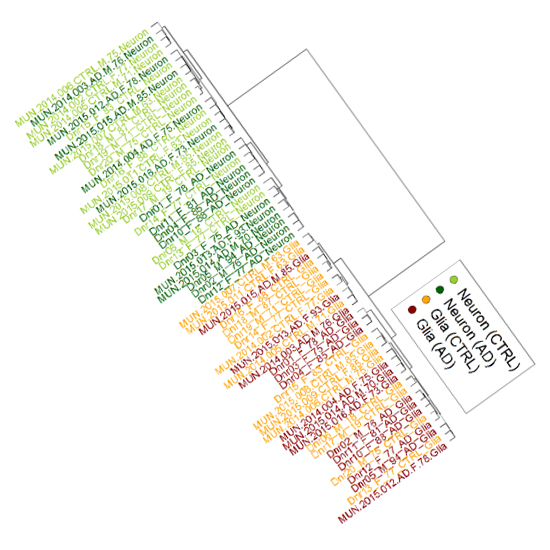DNA methylation analysis on purified neurons and glia dissects age and Alzheimer’s disease-specific changes in the human cortex
25-Jul-2018
Epigenetics & Chromatin 2018, 11:41, https://doi.org/10.1186/s13072-018-0211-3
Epigenetics & Chromatin, online article
Background
Epigenome-wide association studies (EWAS) based on human brain samples allow a deep and direct understanding of epigenetic dysregulation in Alzheimer’s disease (AD). However, strong variation of cell-type proportions across brain tissue samples represents a significant source of data noise. Here, we report the first EWAS based on sorted neuronal and non-neuronal (mostly glia) nuclei from postmortem human brain tissues.
Results
We show that cell sorting strongly enhances the robust detection of disease-related DNA methylation changes even in a relatively small cohort. We identify numerous genes with cell-type-specific methylation signatures and document differential methylation dynamics associated with aging specifically in neurons such as CLU, SYNJ2 and NCOR2 or in glia RAI1,CXXC5 and INPP5A. Further, we found neuron or glia-specific associations with AD Braak stage progression at genes such as MCF2L, ANK1, MAP2, LRRC8B, STK32C and S100B. A comparison of our study with previous tissue-based EWAS validates multiple AD-associated DNA methylation signals and additionally specifies their origin to neuron, e.g., HOXA3 or glia (ANK1). In a meta-analysis, we reveal two novel previously unrecognized methylation changes at the key AD risk genes APP and ADAM17.
Conclusions
Our data highlight the complex interplay between disease, age and cell-type-specific methylation changes in AD risk genes thus offering new perspectives for the validation and interpretation of large EWAS results.











